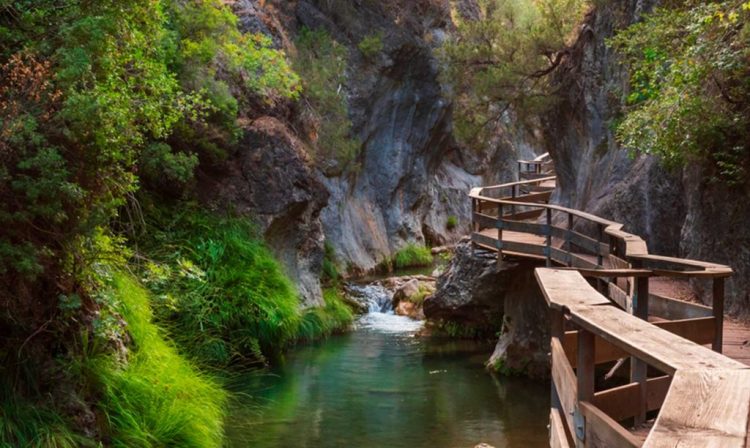Introduction: The Allure of Lesser-Known Scenic Spots
In an age where Instagram-worthy locations and popular tourist destinations often dominate travel itineraries, there is an undeniable charm in seeking out lesser-known, off-the-beaten-path locations. These hidden gems, often untouched by mass tourism, offer a chance to escape the crowds and explore the natural world and local cultures in a more authentic and intimate way. Traveling to scenic spots that aren’t widely publicized gives you the opportunity to connect deeply with both the landscape and the communities that inhabit these areas.
Visiting less-explored destinations allows you to discover the raw beauty of the world’s natural wonders, from serene islands to remote valleys, and helps you immerse yourself in the local culture in a way that larger tourist hotspots simply can’t offer. These places may not always be featured in guidebooks or on social media platforms, but they carry their own unique charm, filled with stories and landscapes waiting to be discovered. In this guide, we will explore why it is important to seek out off-the-beaten-path scenic locations and offer practical tips for how you can find and experience them in a culturally respectful manner.
The Allure of Lesser-Known Scenic Spots
Why do travelers flock to the well-trodden tourist spots? The obvious answer is that these places are popular for a reason – they often boast iconic views, historical significance, and a reputation for being top travel destinations. However, there is an undeniable allure in stepping off the well-worn path and exploring lesser-known areas that hold a different kind of beauty.
- The Charm of Solitude: Popular tourist destinations often come with their share of crowds, long lines, and tourist traps. While these areas can certainly be breathtaking, the experience of solitude found in lesser-known destinations is incredibly rewarding. Imagine standing atop a mountain peak or walking along a secluded beach with only the sound of the wind or waves around you. There’s a peacefulness and tranquility in these locations that can’t be found in busier areas.
- Unspoiled Natural Beauty: Off-the-beaten-path destinations are often less commercialized, meaning that their landscapes are typically more pristine and natural. From hidden waterfalls tucked away in dense forests to untouched islands surrounded by crystal-clear waters, these places tend to remain free from the overdevelopment that can affect more popular tourist spots. Many of these locations are also home to unique wildlife and ecosystems that are less likely to be disturbed by human activity.
- Discovering Hidden History: Lesser-known places often hold rich cultural or historical significance that isn’t widely known. These locations may not be featured in every tourist brochure, but they are steeped in stories, legends, and traditions passed down through generations. By visiting these spots, you can gain a more authentic understanding of the area’s culture, people, and history. Hidden temples, remote villages, and lesser-known monuments often hold secrets that remain untouched by mass tourism.
- A Sense of Adventure: Traveling to lesser-known destinations provides a sense of adventure and exploration. Discovering a hidden beach, a quiet mountain pass, or a secluded valley often feels like uncovering a secret. This sense of adventure adds an extra layer of excitement to your journey, making the experience feel personal and meaningful. You may even have the opportunity to forge your own path, creating your own travel narrative.
How These Hidden Gems Offer a Deeper Cultural Experience
While popular tourist destinations may offer glimpses into a region’s culture, visiting off-the-beaten-path locations often provides a much deeper and more immersive cultural experience. Many of these lesser-known places are where local traditions are still practiced daily, and where communities continue to live as they have for centuries.
- Authenticity: In popular tourist destinations, local cultures are often commercialized to cater to visitors’ expectations. In contrast, lesser-known locations allow you to experience local life in a more authentic way. For example, a visit to a small village that hasn’t been touched by the influx of mass tourism can give you insight into the daily lives, crafts, and customs of the people who live there. You can see the traditional ways of life that have remained largely unchanged and engage with locals in a genuine manner.
- Cultural Preservation: Some off-the-beaten-path locations may be the last remaining strongholds of traditions and cultural practices that are at risk of being lost. Visiting these places helps support the preservation of these traditions, whether it’s the art of pottery making in a remote town or indigenous ceremonies in a secluded area. By supporting these local communities, you are contributing to the sustainability of their culture and way of life.
- Closer Connection to the Land: Local traditions often reflect a deep connection between the people and their environment. Visiting lesser-known locations allows you to understand how landscapes shape local customs, rituals, and practices. Whether it’s a spiritual ceremony held by a sacred river or a community feast celebrated during the harvest season, you get the chance to witness firsthand how people live in harmony with their surroundings.
- Less Commercialized, More Personal Interactions: Unlike crowded tourist areas where interactions are often transactional, in lesser-known destinations, you are more likely to experience personal and meaningful connections with locals. This can range from learning traditional cooking methods from a local chef to hearing stories about the area from elderly residents. These genuine exchanges can help you understand not only the place but also the people who call it home.

Best Lesser-Known Destinations: Islands, Remote Beaches, and Hidden Valleys
The world is full of hidden natural wonders that remain largely untouched by mass tourism. From remote islands to secret valleys, there are countless destinations that offer breathtaking scenery and unique cultural experiences. Here are some of the best lesser-known places to explore:
- Koh Lanta, Thailand: While Thailand’s more famous islands like Phuket and Koh Phi Phi attract large crowds, Koh Lanta remains relatively under-the-radar. With its serene beaches, crystal-clear waters, and lush rainforests, it offers an ideal escape for travelers looking for a quiet, authentic experience. Local villages still practice traditional fishing methods, and you can experience the island’s rich cultural heritage firsthand.
- Faroe Islands, Denmark: Situated between Iceland and Norway, the Faroe Islands are a remote archipelago with dramatic landscapes of rugged cliffs, fjords, and grassy hillsides. Despite their awe-inspiring beauty, the islands remain relatively unknown to most travelers. The local culture is deeply rooted in the landscape, with a strong focus on fishing and sheep herding. Visitors can explore the quiet villages, learn about the local traditions, and experience the pristine beauty of the islands.
- Sikkim, India: Nestled in the northeastern corner of India, Sikkim is a mountainous state with lush forests, serene lakes, and breathtaking views of the Himalayas. It is often overshadowed by more well-known destinations like Ladakh or Himachal Pradesh, but Sikkim offers a rich cultural and natural experience. The state is home to vibrant Buddhist monasteries, ancient temples, and a variety of wildlife, making it an ideal destination for those looking to explore both nature and culture.
- Hidden Valleys of Nepal: While Everest and Annapurna are famous trekking destinations, Nepal is home to countless other hidden valleys that offer incredible trekking opportunities and untouched beauty. The Langtang Valley, for example, is less crowded than other routes but offers spectacular mountain views and a chance to engage with local Tamang culture. The villages in these valleys often have minimal contact with the outside world, allowing you to experience traditional Nepalese life in its purest form.
- Playa Venao, Panama: While Panama City and Bocas del Toro are popular among tourists, Playa Venao offers a quiet and beautiful alternative. Located on the Pacific coast, Playa Venao is a secluded beach town with pristine sand, ideal for surfing, fishing, and relaxing. It’s an excellent destination for those looking to escape the crowds and experience the laid-back culture of Panama’s rural coast.
How to Find Off-the-Beaten-Path Scenic Locations
Finding hidden gems and lesser-known scenic spots requires a bit of research, curiosity, and sometimes a willingness to venture off the conventional travel routes. Here are some tips for discovering these special locations:
- Consult Local Guides and Blogs: One of the best ways to find hidden gems is to ask locals or read travel blogs written by people who live in the area. Local guides can often point you to scenic spots that aren’t mentioned in traditional guidebooks. Additionally, many travel blogs now focus on off-the-beaten-path destinations, so they are a great resource for discovering new places to explore.
- Use Social Media with Caution: While social media can highlight popular destinations, it can also reveal lesser-known spots. Follow travel influencers, nature photographers, and niche tourism accounts to get insights into hidden gems around the world. However, be mindful of the fact that some places might become overrun with visitors once they go viral on platforms like Instagram, so always check if the place is still uncrowded.
- Ask for Local Recommendations: Once you arrive at a more traditional tourist destination, ask locals for their favorite spots that aren’t overrun by tourists. A local restaurant owner, taxi driver, or shopkeeper can often suggest hidden treasures that you wouldn’t find in a typical guidebook.
- Be Adventurous: Sometimes the best way to find an off-the-beaten-path location is simply to wander and explore. Take a detour from the main roads, talk to locals, and venture into areas that are less frequently visited by tourists. You might just stumble upon a quiet, untouched spot that becomes one of your favorite places.
Tips for Respecting Local Culture When Visiting These Places
- Educate Yourself: Before visiting off-the-be
aten-path locations, take time to learn about the culture, traditions, and customs of the region. Understanding the local way of life will help you engage respectfully with the community.
- Support Local Businesses: Instead of staying in international chain hotels or eating at tourist-focused restaurants, try to support local businesses by booking stays at family-owned guesthouses and dining at local eateries. This not only benefits the community but also helps you experience authentic local culture.
- Follow Sustainable Practices: Respect the natural environment by following responsible travel practices, such as minimizing waste, avoiding disturbing wildlife, and staying on designated trails. Sustainable travel ensures that these hidden gems remain protected for future generations.
- Respect Local Traditions: Be aware of cultural norms, especially in more remote areas. For example, in some regions, it’s important to dress modestly when visiting religious sites or sacred lands. Always ask for permission before taking photos of people, and try to engage in the local culture with humility and respect.
Conclusion: Embracing the Beauty of Hidden Natural Wonders and Cultural Traditions
Visiting lesser-known scenic locations offers a unique opportunity to connect with nature and culture in ways that larger, more commercialized destinations cannot. These hidden gems provide a sense of adventure, a deeper understanding of local traditions, and a chance to experience unspoiled beauty in its purest form. By venturing off the beaten path and respecting the people and places you visit, you contribute to the preservation of these incredible destinations and ensure that future travelers can also experience their wonder.





















